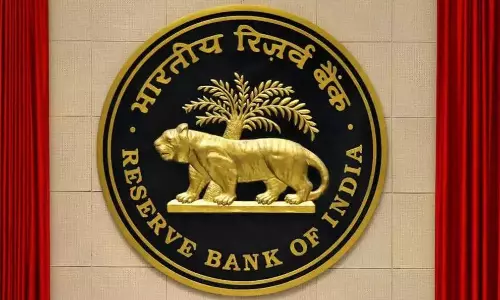
Vikas Dubey's killing raises handcuffing issue vis-a-vis SC guidelines on "inhuman" practice
text_fieldsNew Delhi: The issue of dreaded gangster Vikas Dubey not being apparently handcuffed has kicked up dust after his alleged encounter killing on Friday since the Supreme Court has provided for exceptions while disapproving of the inhuman practice.
Dubey was shot dead by police, who claimed he was trying to flee after the car carrying him on an overnight journey from Ujjain in Madhya Pradesh turned turtle on an isolated stretch of the highway on the outskirts of Kanpur in the neighbouring state of Uttar Pradesh on Friday morning. The distance between Ujjain and Kanpur is about 700 km.
As questions remained whether he was handcuffed or not, Police said the gangster, said to be in his 50s, snatched a pistol from one of the policemen injured in the accident and was shot when he opened fire while trying to flee.
With this incident, the debate over whether or not to handcuff undertrial prisoners while taking them from one place to another has erupted once again.
The apex court in its previous orders in multiple cases has described handcuffing of undertrials and convicts as inhuman, unreasonable, over harsh and arbitrary .
It also had categorically stated that handcuffing of prisoners without judicial consent was illegal.
The apex court had, however, said that in cases where the police or the jail authorities have well grounded basis of drawing a strong inference that a particular prisoner is likely to jump jail or break out of the custody then the said prisoner be produced before the Magistrate concerned and a prayer for permission to handcuff the prisoner be made before the said judicial officer.
The magistrate may then consider the prayer and grant permission to handcuff the prisoner, it said.
We clearly declare -- and it shall be obeyed from the Inspector General of Police and Inspector General of Prisons to the escort constable and the jailwarder -- that the rule, regarding a prisoner in transit prison house and Court house, is freedom from handcuffs and the exception, under conditions of judicial supervision we have indicated earlier will be restraints with irons to be justified before or after, the court added.
The top court has from time to time issued a slew of directives on the procedure to be followed while handcuffing an undertrial, maintaining that the insurance against escape does not compulsorily require handcuffing.
The police, however, has all along been supporting handcuffing at various judicial fora on the ground that the practice has been quite helpful in ensuring that a dreaded accused or convict does not flee their custody.
The apex court in 1995 held that minimal freedom of movement cannot be cut down by application of handcuffs or other hoops.
In another case -- Prem Shankar Shukla vs Delhi Administration, the top court in 1980 made important observations on the issue and said that there were other measures whereby an escort can keep safe custody of a detenu without the indignity and cruelty implicit in handcuffs or other iron in contraptions .
It said: Handcuffing is prima facie inhuman and, therefore, unreasonable, is over harsh and at the first blush, arbitrary. Absent fair procedure and objective monitoring to inflict irons' is to resort to zoological strategies repugnant to Article 21.
Surely, the competing claims of securing the prisoner from fleeing and protecting his personality from barbarity have to be harmonized .
The top court has observed that to prevent the escape of an undertrial is in public interest, reasonable, just and cannot, by itself be castigated.
But to bind a man hand and foot, fetter his limbs with hoops of steel, shuffle him along in the streets and stand him for hours in the courts is to torture him, defile his dignity, vulgarise society and foul the soul of our Constitutional culture, it said.
Referring to Articles 14 (Equality before law) and 19 (Freedoms of speech), the top court had said that when there is no compulsive need to fetter a person's limbs it is sadistic, capricious, despotic and demoralizing to humble a man by manacling him .
Such arbitrary conduct surely slaps Article 14 on the face. The animal freedom of movement, which even a detained is entitled to under Article 19, cannot be cut down cruelly by application of handcuffs or other hoops.
"lt will be unreasonable so to do unless the State is able to make out that no other practical way of forbidding escape is available, the prisoner being so dangerous and desperate and the circumstances so hostile to safe keeping, it had said.























